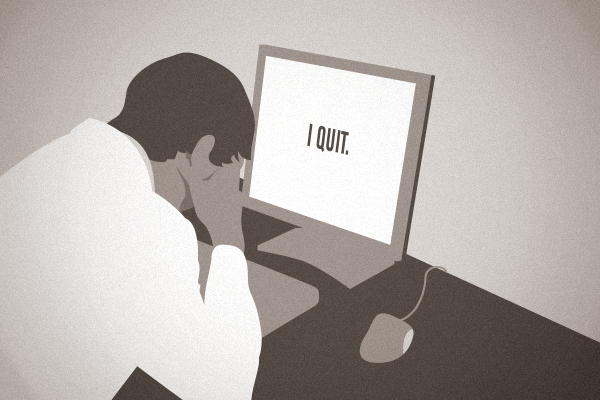Traditionally, there are three financial barriers to starting your practice — the office, the technology and the management. But Atlas Md-style of direct care addresses each of them.
Category Archives: Advice
Dave Ramsey Does The ACA Math And It Doesn’t Add Up
If you’ve listened to the Dave Ramsey Show then you know Dave is a money guy with no formal political leaning (which is ironically political). However, this video segment walks through the oft-neglected common sense of Obamacare. Warning: he goes so far as to call the law communist. Regardless of the label, the math doesn’t work out. Our new healthcare law forces insurers to offer plans for flat rates, regardless of pre-existing conditions, and regardless of risk. Now while this is a noble moral imperative, it defies the ways that actuary tables ACTUALLY work. Meaning the only way for this type of setup to function is with higher premiums, to offset the added to insured groups.

LISTEN: Atlas MD Podcast, Ep. 12
And we’re back. You can stream the new Atlas MD podcast on iTunes. We’ve had some recent speaking engagements, one of which was with the Wichita Rotary. Little known fact, our local Rotary Club is the seventeenth largest in the world! Who’d have thought?
Also, thanks Dr. Ray Siedel from Ruidoso, New Mexico, who stopped in to discuss his direct care transition that’s happening over the next six weeks. We have multiple doctors scheduled to come in every week for the next month. We’re always glad to talk shop, so let us know if you want to stop in.
Wall Street Journal Shares Pros and Cons of Concierge Medicine
Jen Wieczner of the Wall Street Journal stitched together a piece about the benefits and the doubts of concierge medicine. It did successfully clarify the outdated definition of concierge medicine, the personal medicine for jet setters. She also properly incorporated the term “direct primary care” as affordable, non-insurance based care, explaining that on one hand there still are “lavish, celebrity-type treatment” centers, but also a newly emerging option like our Atlas MD-model. She writes that “pared-down clinics charge roughly $50 to $100 a month for basic primary-care medicine, more accessible doctors, and yes, money savings for those looking to reduce their health spending.”
Not bad. That sounds like what we’re up to here at Atlas MD.
She also included this relevant stat. According to Concierge Medicine Today, “Of the estimated 5,500 concierge practices nationwide, about two-thirds charge less than $135 a month on average, up from 49% three years ago.” It’s believed our lower cost practices are driving growth in concierge medicine. Offices are being added at a rate of about 25% a year, says the American Academy of Private Physicians.
Also not bad. This is becoming the free market reaction we were hoping for.
Patient-Centered Communication Skills Correlate With High Productivity And Satisfaction Scores
People are forever telling Stephen Wilkins that he’s wasting his time talking to providers about the need to improve their patient communication skills. Here’s what the naysayers typically cite:
- Physicians usually think they’re good communicators already
- There’s no time to talk to patients
- Physicians aren’t paid to talk
Lucky for you, Wilkins easily debunks all three of these myths in his new blog post on Mind The Gap. It’s a great read, mostly because he builds a strong case for why patient-doctor communication is NOT a zero-sum game. He cites a recent publication suggesting that providers can in fact be productive while at the same time creating a satisfying patient experience.
READ THE COMPLETE POST ON MIND THE GAP
Also included is a comparison of doctor scores from this study. Certain attributes are emphasized in the group that more successfully communicates, including a focus on teaching and explanations. That reminds us, why do we value the practice of direct care? At the core, it’s time. Teaching takes time, no matter how many self-help books we read or productivity apps we download.
Think of the fee-for-service physician who demanded 30 minutes with every patient (to the chagrin of her employer) and ourselves, who get to spend 45 minutes with every patient who comes in for a check-up. Learning how to communicate with patients is gaining the ability to teach your patients. And teaching them is key to them leaving your office with the ability to better take care of themselves. In essence, this is you being productive and more fully satisfying your patients.

LISTEN: Atlas MD Podcast, Ep. 11
You can stream the next session of our Atlas MD podcast on iTunes. First off, congratulations to new members of the direct primary care community. Anne Riggs in Pratt City has opened her own direct primary care clinic. And Dr. Laurie in New Hampshire will be converting to a cash-only model come the first of the year.
We’ve been on what we’ve jokingly referred to as a “World Tour” and this Saturday we’ll be speaking at The Physicians’ Summit in Dallas. If it’s like any of our recent engagements, we’ll expect a “mob” of doctors and industry folks to bombard us with questions about our direct care model. But seriously, we’re equally amazed and blessed to have our take on healthcare reform met with such interest and enthusiasm. Thank you!

Direct Care Prescription Dispensing By State
In case you’re wondering, here’s the list of prescription dispensing laws by state. The rules vary, but only four states have banned dispensing outright — Montana, Texas, Utah and New York. We’ve extolled the benefits of dispensing meds for your direct care patients. First off, it gives your practice a kind of Costco-esque appeal. Now, the $50 monthly fee is giving them access to seriously discounted meds. We’re talking penny on the dollar in certain cases. Secondly, it adds a convenience factor. It’s one more thing for a patient to worry about when they see you and then have to go wait for a prescription. And it’s one more thing for you to do, either calling in or faxing over the order (or handing a piece of paper to your patient to deal with). But when you can dispense yourself, the visit becomes a very complete experience — a personal one, and a satisfying one.

A Burnt-Out Doctor Decides To Quit
Diane W. Shannon, M.D., MPH, is now solely a freelance writer. That’s because primary care burned her out of practicing medicine entirely. She’s not burnt out on the industry, though, instead focusing on what she calls “performance improvement in health care.”
Dr. Shannon is exactly the doctor we refer to when critics mention that direct care might exacerbate a doctor shortage. To reiterate, every doctor in America doesn’t get to cut the red tape and instantaneously practice insurance-free medicine. No, direct care is about doctors cooperating collectively and acting independently to circumvent the administrative forces that swallow doc’s time, stress them out, and prohibit them from forming strong relationships with patients.
Is Chris Dorster Allergic To Red Tape?
Yes, New York resident Chris Dorster suffers from occasional allergies, so he’s been known to sneeze a bit. However, there’s more than just pollen to sneeze at in his blog post. That’s because Chris currently doesn’t have prescription medication coverage. When his allergies flared up recently, he went in to see his doctor. There he was given a sample of a medication. The brand name nasal spray did the trick.
But the plot thickened. When Chris ran out of his sample he figured he’d pay cash for another tiny bottle of nasal spray. It can’t cost that much, he thought, maybe forty dollars?
NPR Breaks Down Obamacare’s Effect on Insurance Rates
NPR published an article reviewing introductory rates on policies offered through state-run insurance exchanges. The report examined 36 different states. So what’s the verdict? A resounding “it depends.” In Oklahoma, premiums are going for as low as $96/month. Meanwhile, in Wisconsin, the lowest rate on a bronze plan is well over $300. The reporter echoed our direct care mantra, saying, “Competition equals lower prices.” They explained how in regions with only one insurance company selling through the subsidized exchange, the average monthly premium for a 21-year-old buying the lowest cost bronze policy is $186, before any subsidies are applied. However, in regions with 10 or more rival carriers, the average cost is $132 or less.
How will Obamacare’s varying premium rates affect direct care practices?
Actually, there are two wins happening. If you’re a doctor looking to move to open a cash-only clinic, you’ll bode well in regions with only one insurance plan offered through the exchange. Lower competition tends towards higher insurance rates, meaning that wrap-around plans and your direct care offering can add tremendous value. Secondly, in areas with fewer insurance plans offered on the exchange, there is another effect: increased premiums for existing subscribers. In this case, because of the lack of competition, and the fact that Obamacare is forcing insurance companies to expand their offerings, rates might reach an exorbitant level for the subscriber. This is another patient who would benefit greatly from switching to a wrap around plan (remember, Obamacare means that insurance plans can’t raise their rates for pre-existing conditions) and enrolling in your direct care clinic.